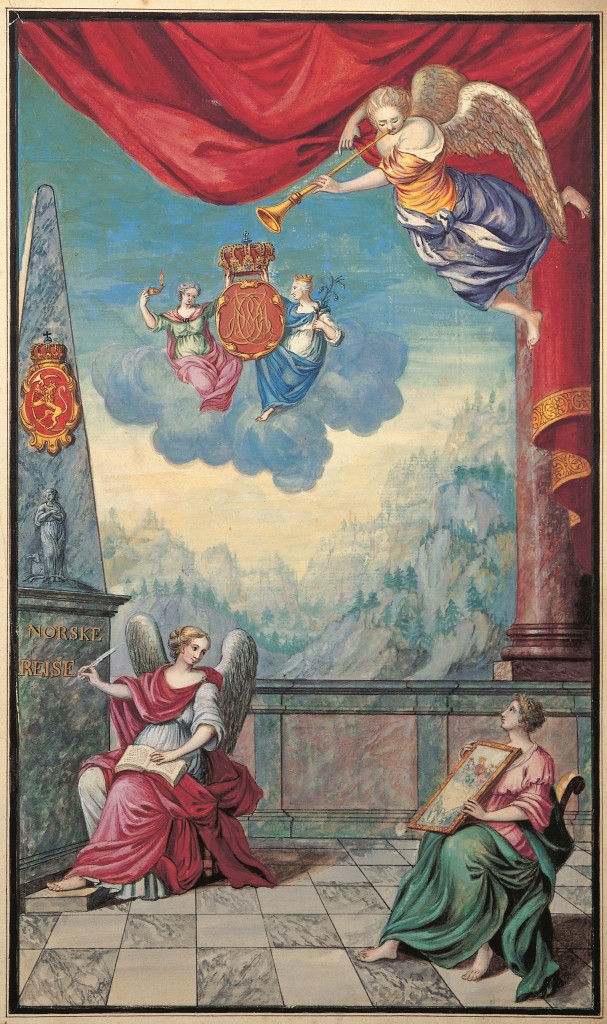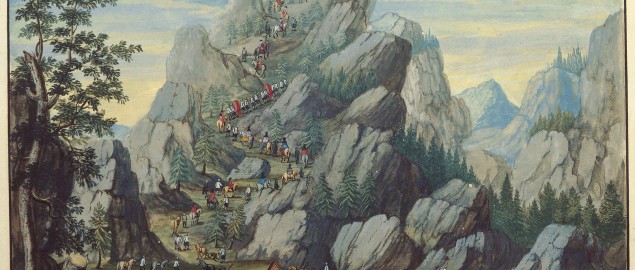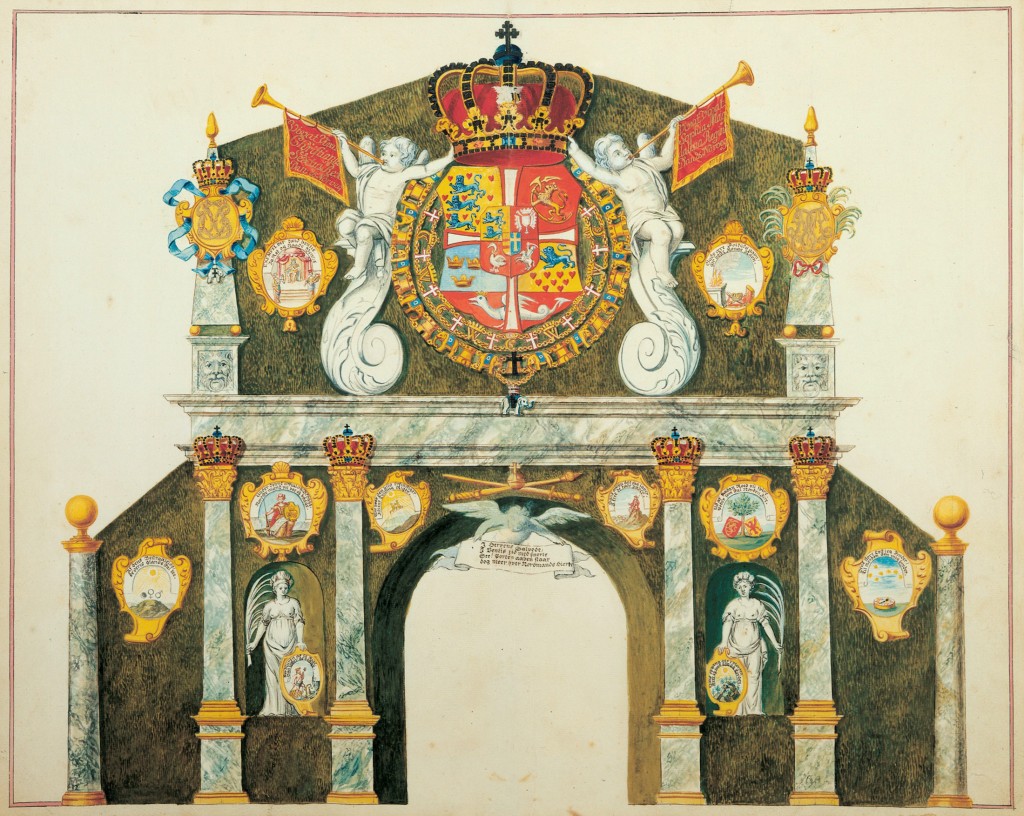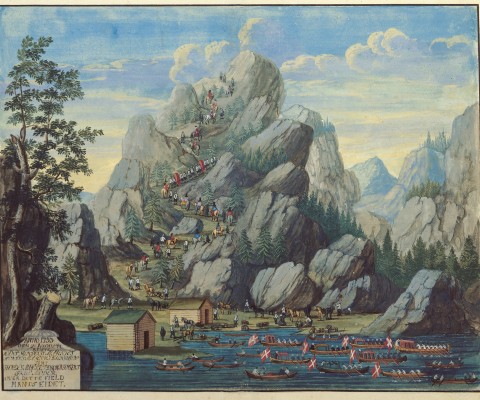King Christian VI’s Journey to Norway in 1733 (1743)
Until 1814 the kings of Denmark were monarchs of the double monarchy Denmark-Norway. Even though Copenhagen was the centre of both realms, and Norway could seem remote, vast, and desolate when seen from there, it was the monarch’s duty to visit his northern dominion at least once during his reign.
The best known and best documented journey, which with regard to the extent of the royal train was also largest, was King Christian VI and Queen Sophie Magdalene’s journey from June to September 1733. The company numbered 192, who travelled from Moss in the south to Trondheim in the north, much of the way along the dangerous mountain paths between towns and settlements which were difficult to pass.
A magnificent manuscript about the journey was made, which was intended to form the basis of The Royal Academy of Sciences’ first publications after its founding in 1743. The planned printed edition ran, however, into both editorial and illustrational problems and never saw the light of day. A poorly illustrated and less extensive Journal and Description of His Royal Majesty … Journey to the Kingdom of Norway in the Year 1733 by Jonas Kierulf was, however, published in Copenhagen in 1745.
The magnificent manuscript which was the basis for the aborted publication plans is fortunately still to be found in the Queen’s Reference Library. It is likely that we can thank the protracted plans for this, as it was (still?) on loan to the Academy of Sciences when most of HM the King’s Reference Library was lost in the fire at Christiansborg in 1794.
The text of the manuscript, which carefully follows the large train’s journey point by point, was written by Heinrich Willemsen, who took part in it himself. The many, slightly naïve illustrations, which show maps, prospects of the difficult overland travel routes, as well as the triumphal arches which the towns had built in order to welcome the Royal Couple, are by Jacob Fosie and Heinrich Jacob Pohle, as well as a number of other, unidentified artists.
The work was published in facsimile in 1992 with a foreword by HM Queen Margrethe II and an afterword by the then Reference Librarian Klaus Kjølsen.
The illustrated manuscript which was never printed, and the more basic report which was. Both in HM The Queen’s Reference Library.

The title page shows the muse of history as a winged being holding the book, in the process of engraving the title into the marble plinth of an obelisk bearing the Norwegian lion. Meanwhile, the goddess of fame proclaims the event above the royal couple’s intertwined double monogram, which is supported by two personifications, perhaps wisdom and victory (with a lamp and a palm branch respectively). The figure with the laurel wreath appears to hold the book for the muse who writes, and may be an idealized portrait of the author. The wild Norwegian nature in the background is framed by the columns, obelisks, and draperies of civilization.

Mannseidet was an important pass on journeys along the coast, and the peasants were required to keep the road passable and to transport the royal officials. Both Christian V and Frederik IV took this route during their Norwegian journeys. Before Christian VI’s journey the road had to be improved in order to manage the large royal retinue. The two sedan chairs are for Queen Sophie Magdalene and her mother, Sophie Christiane of Wolfstein.

One of several triumphal arches that were raised to welcome the royal couple. The two cherubs which flank the enormous national coat of arms above the arch blow trumpets in honour of the king and queen, whose monograms adorn the obelisks to each side. The eight cartouches all feature a verse about Norway’s love for and loyalty to the king, and the pictures show various aspects of the same theme in the form of so-called emblems. The angel hovering at the top of the archway summarises: “You anointed of the Lord / are awaited hear in sorrow / Look! The gate stands open / even more every Norwegian’s heart”.
 Dansk
Dansk
 English
English
 Deutsch
Deutsch

